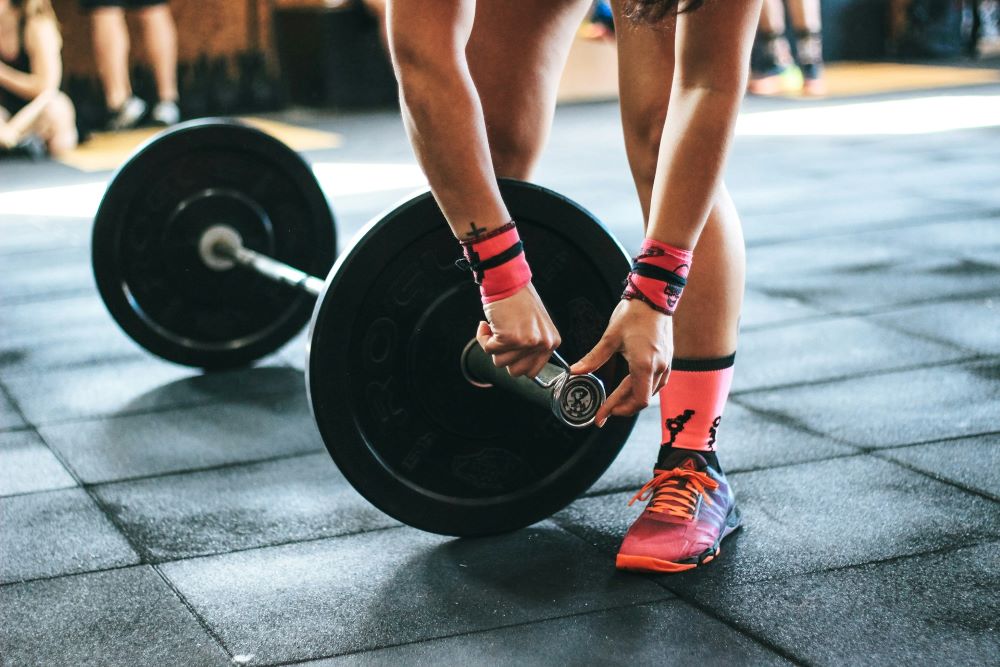
Cricket is a sport that demands a blend of strength, agility, and stamina. For players seeking to enhance their performance, the right cricket fitness equipment is essential. The tools you choose can significantly impact your ability to train effectively and reach peak performance levels. From strength training to agility drills, having the right gear can make all the difference.
This guide will delve into the best fitness equipment for cricket training, offering insights into how each piece can contribute to your overall fitness regimen. We’ll explore a range of equipment designed to boost your strength, speed, and endurance, ensuring you are well-prepared for the demands of the game.
We’ll highlight cricket accessories every player needs to maintain a comprehensive training routine. Whether you’re a bowler needing to enhance your delivery power or a batsman looking to improve your endurance, the right equipment is crucial.
With the appropriate tools, you can train more efficiently and effectively, ultimately enhancing your performance on the field. This guide aims to equip you with the knowledge to make informed decisions about your cricket fitness gear.
Essential Strength Training Tools
Dumbbells and Kettlebells
Dumbbells and kettlebells are staples in any fitness routine. They offer a variety of exercises that target different muscle groups. Bicep curls and kettlebell swings build the power necessary for batting and bowling. They also improve grip strength, which is crucial for holding the bat or ball securely. Using these weights regularly can also help in developing overall body strength, enhancing muscle coordination, and boosting endurance.
In addition to their basic uses, dumbbells and kettlebells can be incorporated into complex movements that simulate cricket-specific actions. For instance, exercises mimicking the bowling action or batting swings can be performed with these weights, providing a functional training aspect. This helps in creating muscle memory and improving performance consistency on the field.
Resistance Bands
Resistance bands are versatile and portable. They come in different tension levels, making them ideal for strength training and rehabilitation exercises. Using these bands can enhance flexibility and muscular endurance, key for agile fielding and sustained batting. Exercises like band pull-aparts and resisted squats are particularly beneficial. They can also be used for pre-game warm-ups to activate muscles and prevent injuries.
Moreover, resistance bands are excellent for developing core strength and stability. Core exercises using bands can improve balance and posture, essential for maintaining form during long hours of play. Their adaptability allows for a wide range of motion exercises, making them a valuable addition to any training regimen.
Tools for Agility and Speed
Agility Ladder
An agility ladder is perfect for improving footwork and coordination. Quick feet are essential in cricket for both batting and fielding. Drills using the ladder can boost your speed and balance, making you more nimble on the pitch. Plus, they add an engaging element to your workouts. The repetitive nature of ladder drills helps in enhancing muscle memory, leading to more instinctive and rapid movements during a game.
Additionally, agility ladders are great for cardiovascular health. The high-intensity drills elevate your heart rate, providing a good cardio workout while improving agility. Consistent use can lead to better overall fitness and quicker reflexes, both of which are crucial in fast-paced cricket scenarios.
Speed Hurdles
Speed hurdles are great for enhancing agility and explosive power. These drills help you change direction quickly and efficiently. Incorporating speed hurdle exercises into your training can improve your sprinting and jumping skills, crucial for quick runs and effective fielding. The varied movements required in hurdle drills can also improve coordination and proprioception, making you more aware of your body’s movements.
Moreover, speed hurdles can be used in combination with other training tools for a more comprehensive workout. Pairing them with agility ladders or resistance bands can create complex drills that challenge multiple aspects of physical fitness. This holistic approach can lead to better overall athletic performance and reduced injury risk.
Endurance and Cardio Equipment
Skipping Rope
A skipping rope is a simple yet effective tool for improving cardiovascular fitness. Skipping helps build stamina and improve footwork, essential for long innings and active fielding. It also enhances coordination and timing, both critical skills in cricket. Regular skipping sessions can significantly boost your cardiovascular health, leading to better overall endurance and performance.
Skipping ropes are also highly portable and can be used anywhere, making them ideal for quick, effective workouts. They are great for warming up before a match or cooling down afterward. The rhythmic nature of skipping helps in maintaining a steady breathing pattern, crucial for sustaining energy levels during prolonged physical activity.
Treadmill
A treadmill is ideal for building endurance. Running on a treadmill allows you to control speed and incline, simulating different playing conditions. Interval training on a treadmill can boost cardiovascular health, helping you avoid fatigue during matches. Treadmills also allow for varied workouts, from steady-state runs to high-intensity interval training (HIIT), catering to different training needs.
Using a treadmill regularly can also help in maintaining a consistent training routine, regardless of weather conditions. This ensures that you can keep up with your fitness regimen year-round. The ability to monitor heart rate and other metrics during treadmill workouts provides valuable feedback, helping you optimize your training for maximum benefit.
Flexibility and Recovery Tools
Foam Roller
A foam roller is crucial for muscle recovery and flexibility. Regular use can alleviate muscle soreness and improve blood circulation. This helps maintain peak performance and reduce the risk of injury. Rolling your legs, back, and arms can speed up recovery after intense sessions, allowing you to train more consistently and effectively.
Foam rollers are also excellent for breaking down muscle knots and improving tissue elasticity. This leads to better flexibility and range of motion, crucial for executing various cricket techniques. Regular use of a foam roller can also enhance overall mobility, making movements smoother and more efficient.
Stretching Straps
Stretching straps are great for improving flexibility. They help achieve deeper stretches, enhancing your range of motion. Flexibility is vital for executing various cricket techniques, such as different bowling styles and batting shots. Regular stretching can also prevent muscle strains, ensuring that you stay injury-free throughout the season.
These straps are especially useful for static stretching exercises, where holding a position for a prolonged period can significantly increase flexibility. They are also beneficial for targeting specific muscle groups that are hard to stretch otherwise. Incorporating stretching straps into your daily routine can lead to long-term improvements in flexibility and overall muscle health.
Advanced Training Gadgets
Smart Fitness Trackers
Smart fitness trackers monitor your physical activity. They provide data on heart rate, calories burned, and sleep patterns. This information helps tailor your training program to meet specific goals. Analyzing this data allows for informed decisions about training intensity and recovery, optimizing your performance and health.
These devices also offer the benefit of tracking long-term progress. By keeping a detailed record of your workouts and physical activity, you can identify trends and make necessary adjustments. This level of insight can lead to more efficient training and better results on the field.
Power Meters
Power meters measure the force of your movements. They are particularly useful for bowlers to assess the power behind their deliveries. Using a power meter can help refine technique and increase bowling speed. Tracking progress over time offers motivation and insight for improvement, helping you understand how changes in your training regimen impact performance.
Power meters can also be used to analyze other aspects of your game, such as the power generated in batting strokes. This detailed feedback allows for precise adjustments and targeted improvements. Incorporating power meters into your training can lead to a more scientific and effective approach to improving your cricket skills.
Practical Tips for Choosing Equipment
Quality Over Quantity
When selecting fitness equipment, focus on quality. Durable and reliable gear offers better results and lasts longer. Investing in high-quality equipment can enhance your training and save money over time. It’s better to have a few high-quality items that serve multiple purposes than a large collection of mediocre tools.
Quality equipment also provides better safety, reducing the risk of injury. This is particularly important for strength training tools, where poor-quality gear can lead to accidents. Ensuring that your equipment is well-made and reliable helps maintain a safe and effective training environment.
Consider Your Specific Needs
Choose equipment based on your training objectives. If you need to boost speed, focus on agility tools. For strength, opt for weights and resistance bands. Tailoring your equipment to your needs ensures more effective workouts. Understanding your specific requirements can help you make better purchasing decisions and avoid unnecessary expenses.
Additionally, consider how your needs might evolve over time. Investing in versatile equipment that can be used in various training scenarios can be more beneficial in the long run. This adaptability allows you to continuously challenge yourself and improve, keeping your training dynamic and engaging.
Space and Portability
Consider your training space and equipment portability. If space is limited, go for compact and multi-functional tools. Portable equipment allows you to train anywhere, ensuring you don’t miss workouts while traveling. This flexibility is crucial for maintaining a consistent training regimen.
Choosing equipment that is easy to store and transport can also help keep your training area organized. This can create a more pleasant and efficient workout environment, leading to better focus and productivity during your sessions. Portable equipment ensures that you can stay on track with your fitness goals, no matter where you are.
Safety First
Always prioritize safety with your equipment. Regularly check for wear and tear and follow maintenance guidelines. Ensuring your gear is safe helps prevent injuries. Proper maintenance not only extends the life of your equipment but also guarantees that it performs as expected during your workouts.
Educating yourself on the correct usage of each piece of equipment is equally important. Understanding proper form and technique can prevent accidents and enhance the effectiveness of your training. Always approach your workouts with a focus on safety to ensure long-term success and health.
Incorporating Equipment into Training Routines

Strength Training Routine
Start with a mix of dumbbell and kettlebell exercises. Aim for compound movements like squats and lunges. Incorporate resistance bands for added challenge and flexibility. This combination builds muscle power and endurance, critical for batting and bowling. Regularly changing your routine can prevent plateaus and keep your workouts engaging.
Adding variation to your strength training routine can target different muscle groups and improve overall fitness. For example, alternating between heavy and light weights can help build both strength and endurance. This balanced approach ensures comprehensive muscle development, crucial for overall athletic performance.
Agility and Speed Drills
Include agility ladder and speed hurdle drills in your routine. Focus on quick footwork and explosive movements. These exercises enhance your ability to react swiftly on the field. Regular practice will improve overall agility and speed. Combining these drills with other cardio exercises can further boost your fitness levels.
Agility and speed drills also enhance coordination and reflexes. This makes them particularly beneficial for fielding positions that require quick responses. By consistently incorporating these drills into your training, you can significantly improve your in-game performance and agility.
Cardio Workouts
Integrate skipping and treadmill sessions into your cardio routine. Use the skipping rope for high-intensity intervals. On the treadmill, vary the speed and incline to simulate match conditions. These workouts build endurance and cardiovascular health. Regular cardio sessions are essential for maintaining stamina during long matches.
Cardio workouts also help in managing weight and improving overall fitness. A combination of high-intensity interval training (HIIT) and steady-state cardio can provide a balanced approach to improving cardiovascular health. This mix ensures that you are well-prepared for the physical demands of cricket.
Flexibility and Recovery Sessions
Use foam rollers and stretching straps post-workout. Roll out major muscle groups to relieve tension. Stretching straps help achieve deeper stretches, improving flexibility. Regular recovery sessions prevent injuries and aid in muscle repair. Incorporating these tools into your routine can lead to quicker recovery times and better overall performance.
Flexibility and recovery sessions are also crucial for maintaining long-term muscle health. Regular use of these tools can prevent chronic injuries and improve overall mobility. This ensures that you can perform at your best consistently, without being hampered by muscle tightness or soreness.
Personalizing Your Training Plan
Setting Goals
Define clear fitness goals. Whether it’s increasing bowling speed or improving stamina, specific goals guide your training focus. Regularly review and adjust these goals based on your progress. Setting realistic and achievable targets can keep you motivated and focused on your training.
Having specific goals also allows for better planning and measurement of progress. It gives you a clear direction and purpose for each training session. Regularly evaluating your goals ensures that your training remains effective and aligned with your overall objectives.
Tracking Progress
Use fitness trackers and power meters to monitor progress. Keep a log of your workouts and improvements. Tracking data helps identify areas needing attention and keeps you motivated. Detailed records provide insights into what’s working and what needs adjustment, leading to more efficient training.
Tracking progress also helps in maintaining accountability. Regularly reviewing your achievements and setbacks can provide valuable feedback. This continuous assessment can drive you to push harder and achieve your fitness goals more effectively.
Adapting to Feedback
Listen to your body and adapt your training. If certain exercises cause discomfort, modify them or seek alternatives. Regularly assess your performance and adjust your routine for continued improvement. Being responsive to feedback helps in maintaining a balanced and effective training regimen.
Adapting your training based on feedback ensures that you are not overtraining or risking injury. It allows for a more personalized approach that caters to your unique needs and capabilities. This adaptability is key to long-term success and sustained improvement in your cricket performance.





